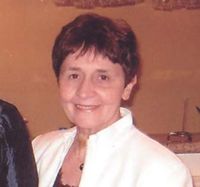The Feast of All Souls (November 2) has traditionally been a fairly sombre feast in the liturgical calendar, a time to remember those who have died, especially the members of  our family and those close to us. It follows immediately on the Feast of All Saints (November 1).
our family and those close to us. It follows immediately on the Feast of All Saints (November 1).
There is a close overlap between these two feasts that fall on successive days. Over these two days, we celebrate the mystery of the communion of saints: the saints through whom we pray to God, the saints for whom we pray, and the ‘saints’ or God’s ‘holy’ people with whom we gather to pray. The saints are not only those who are ‘canonised’ as saints. They are rather those who have heard God’s gracious offer to ‘share in the inheritance of the saints in light’ (Colossians 1:12).
All Souls Day was first celebrated by monks in the seventh century, on the day after Pentecost. Since the 10th century, it has been observed on November 2. Prayer for the dead is grounded in a deep conviction that a purifying process accompanies the experience of death. Some suggest that at death we face the personal limitations we have not faced in life. Who knows? It remains in the realm of mystery.
Matthew 11:25-30 may seem a strange choice of gospel text for this celebration. It focuses on the living rather than the dead. Jesus calls to himself those who are weary or carrying heavy burdens. These terms can be understood both literally and metaphorically. The ambiguity is possibly intended. Jesus promises ‘rest’ to the burdened.
In the biblical tradition, rest is God’s rest or ‘shabbat’. In the context of today’s feast, God’s ‘rest’ becomes never-ending rest in God’s presence, freedom from enslavement or suffering of any kind. This unfailing ‘rest’ beyond the grave is promised to those who learn from Jesus, in other words those who truly live as disciples. In the final analysis, All Souls Day is as much for the living as for those who have gone before us.